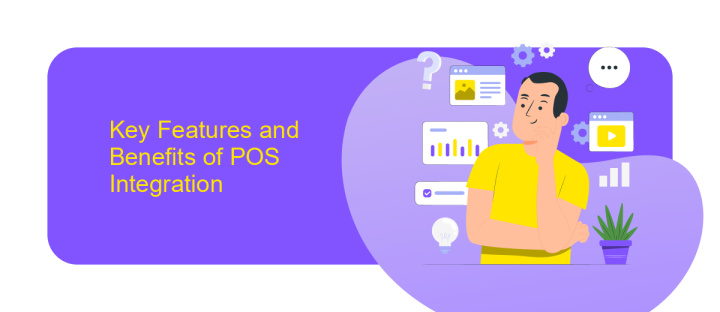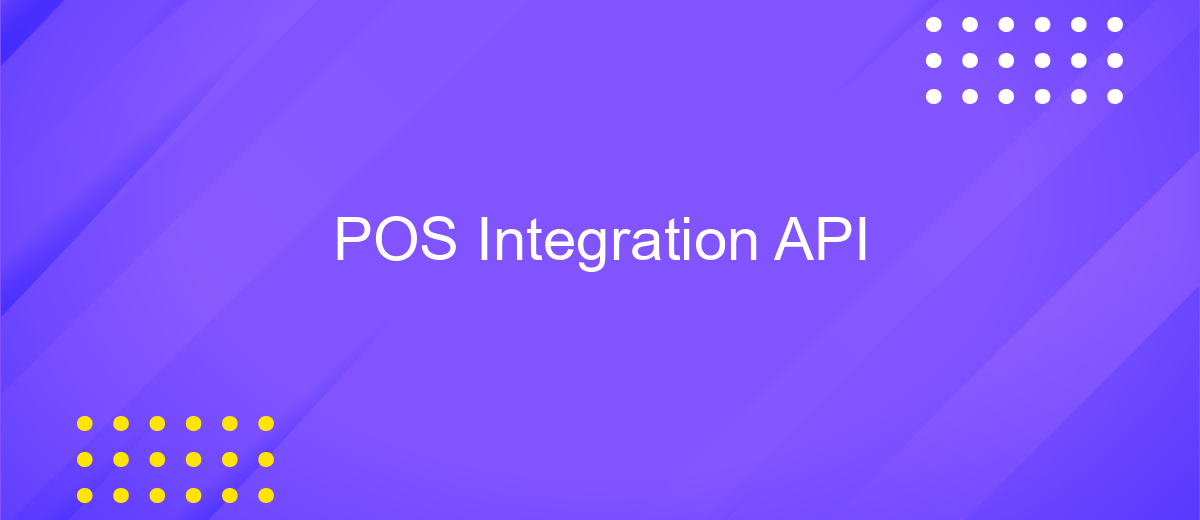POS Integration API
In today's rapidly evolving retail landscape, seamless integration between point-of-sale (POS) systems and other business applications is crucial for operational efficiency and enhanced customer experiences. The POS Integration API serves as a vital tool for businesses, enabling them to connect their POS systems with various platforms effortlessly. This article explores the benefits, functionalities, and implementation strategies of POS Integration APIs, highlighting their role in modernizing retail operations.
Introduction to POS Integration APIs
Point of Sale (POS) Integration APIs are essential tools for businesses seeking to streamline their operations and improve customer experiences. These APIs enable seamless communication between POS systems and various software applications, facilitating efficient data exchange and process automation. By integrating POS systems with other business tools, companies can enhance inventory management, optimize sales processes, and gain valuable insights into customer behaviors.
- Facilitates real-time data synchronization between POS systems and other platforms.
- Enhances operational efficiency by automating routine tasks.
- Improves customer experience through personalized service offerings.
- Enables better inventory management and accurate sales tracking.
- Provides valuable analytics for informed decision-making.
By leveraging POS Integration APIs, businesses can unlock new opportunities for growth and innovation. These APIs not only streamline operations but also provide a competitive edge by enabling businesses to respond quickly to market changes and customer demands. As a result, companies can focus on delivering exceptional products and services while maintaining efficient and scalable operations.
Key Features and Benefits of POS Integration

POS Integration API offers a seamless connection between point-of-sale systems and various business applications, enhancing operational efficiency. By facilitating real-time data exchange, it ensures that inventory levels, sales transactions, and customer data are consistently updated across platforms. This integration minimizes manual data entry, reducing errors and freeing up valuable time for employees to focus on customer service. Moreover, it supports various payment methods, providing flexibility and convenience to customers, which can lead to increased sales and customer satisfaction.
One of the standout features of POS Integration API is its adaptability to different business needs. With services like ApiX-Drive, businesses can effortlessly configure integrations without extensive technical knowledge. This service simplifies the process, allowing businesses to connect their POS systems with CRM, accounting, and marketing tools swiftly. As a result, businesses can gain valuable insights from consolidated data, enabling better decision-making and strategic planning. Overall, POS Integration API not only streamlines operations but also empowers businesses to leverage technology for growth and improved customer engagement.
Types of POS Integration APIs and Architectures

POS Integration APIs play a crucial role in modern retail environments by facilitating seamless communication between point-of-sale systems and other business applications. Understanding the different types of POS Integration APIs and their architectures is essential for selecting the right solution for your business needs.
- REST APIs: Representational State Transfer (REST) APIs are widely used due to their simplicity and scalability. They rely on standard HTTP methods and are ideal for web-based applications.
- SOAP APIs: Simple Object Access Protocol (SOAP) APIs offer robust security features and are suitable for enterprise-level applications requiring formal contracts and stateful operations.
- GraphQL APIs: GraphQL APIs provide flexibility by allowing clients to request specific data structures, reducing over-fetching and under-fetching of data.
- Webhooks: Webhooks enable real-time data transfer by sending HTTP POST requests to a specified URL when an event occurs, ideal for event-driven architectures.
Choosing the right POS API architecture depends on factors such as scalability, security, and the specific requirements of your business. By evaluating the strengths and limitations of each type, businesses can ensure efficient integration and improved operational workflows.
Implementing and Managing a POS Integration API

Implementing a POS Integration API involves several key steps to ensure seamless communication between your point-of-sale system and external applications. First, identify the specific requirements and objectives for the integration, such as real-time data exchange, inventory management, or enhanced customer experiences. This clarity will guide the development process and help in selecting the right API features.
Next, choose a suitable API that aligns with your POS system's architecture and business goals. Consider factors like scalability, security, and compatibility with existing systems. Collaborate with developers to design the integration, focusing on robust error handling, data validation, and secure authentication methods.
- Define clear API endpoints and data formats.
- Implement authentication protocols, such as OAuth or API keys.
- Test the integration thoroughly in a sandbox environment.
- Monitor performance and address any issues promptly.
Managing a POS Integration API requires ongoing attention to ensure optimal performance and security. Regularly update the API to incorporate new features and address vulnerabilities. Establish a monitoring system to track API usage and detect anomalies. By maintaining a proactive approach, businesses can maximize the benefits of their POS integration and enhance operational efficiency.
Best Practices and Considerations for POS API Integration
When integrating a POS API, it's crucial to ensure seamless data flow between systems. Start by thoroughly understanding the API documentation to identify required endpoints and data formats. Consistent testing during development helps catch issues early and ensures that the integration meets business needs. Leveraging services like ApiX-Drive can simplify the process, offering tools to connect different systems without extensive coding knowledge. This can save time and reduce errors, especially for businesses lacking in-house technical expertise.
Security is another key consideration. Ensure that all data transmitted via the API is encrypted and that authentication measures are robust, protecting sensitive customer and transaction data. It's also wise to monitor API usage and performance regularly to identify any potential bottlenecks or failures. Finally, keep scalability in mind; as your business grows, your POS API integration should be able to handle increased transaction volumes without compromising performance. Regular updates and maintenance are essential to adapt to evolving business needs and technological advancements.
FAQ
What is a POS Integration API and why is it important?
How can I integrate my existing POS system with other software?
What are the common challenges faced during POS API integration?
How can I ensure the security of my data when using a POS Integration API?
Can I customize the integration to suit my business needs?
Strive to take your business to the next level, achieve your goals faster and more efficiently? Apix-Drive is your reliable assistant for these tasks. An online service and application connector will help you automate key business processes and get rid of the routine. You and your employees will free up time for important core tasks. Try Apix-Drive features for free to see the effectiveness of the online connector for yourself.

